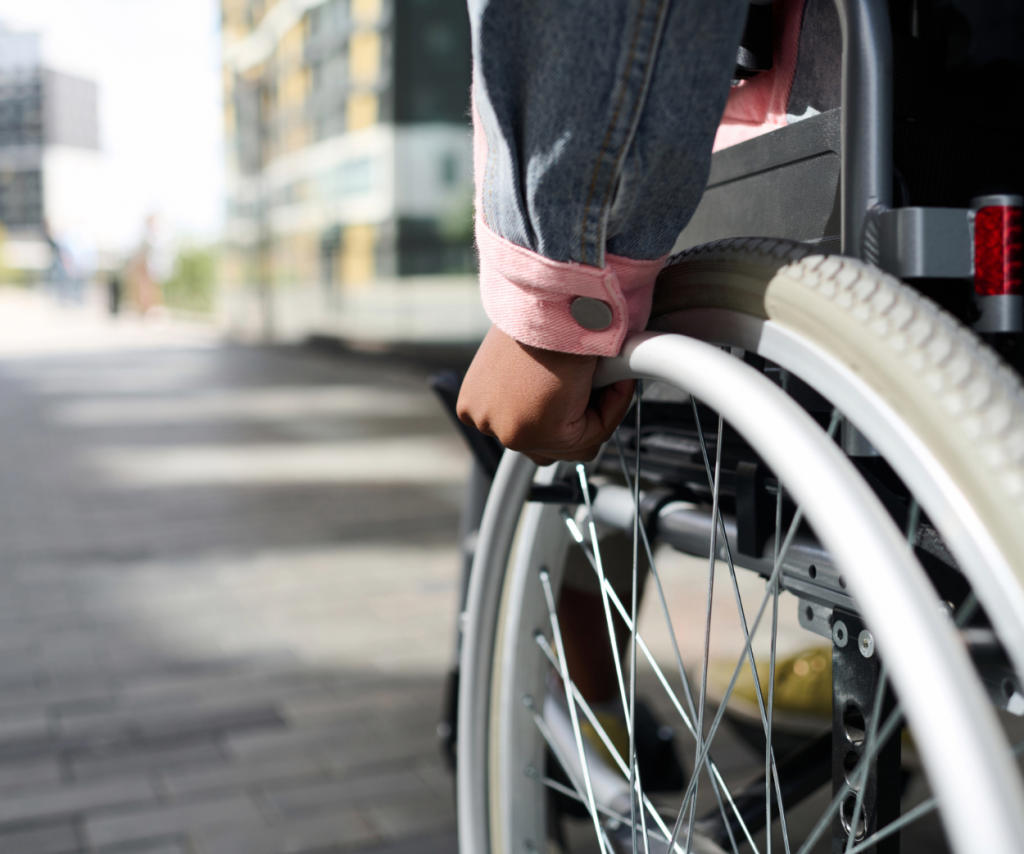Five Tips to Help Speed Up the Repair Process
As a CRT user, much of the repair process is outside of your control, but there are things you can do to help the process move as quickly as possible.
When your complex rehabilitation technology (CRT) equipment breaks down, getting it repaired as quickly as possible is critical. Your chair is what keeps you moving through life.
But CRT repairs take time. Many factors influence the repair timeline—from insurance documentation requirements to the review and approval process—and a lot of them are outside of the CRT user’s control. Even so, there are some proactive steps you can take to help keep the repair process moving as quickly as possible.
How Can You Help Speed Up the Repair Process?
Tip 1: Report the problem BEFORE it becomes catastrophic.
Joystick not working properly? Notice a problem with your tire, footrest or battery? Report the issue to your CRT provider as soon as possible so that a small problem doesn’t become a full breakdown. Your wheelchair provider will set up an evaluation to determine what’s causing the problem. In some cases, a technician may be able to perform a remote evaluation, but if that is unsuccessful, you may need to schedule an in-branch or in-home evaluation appointment.
Tip 2: Understand insurance requirements and approval times.
Data tells us that almost 45% of the repair process is spent collecting documentation and waiting for insurance approvals, making this one of the most time-intensive parts of the process. Before parts can be ordered or repairs begin, most insurance carriers require prior authorization, which usually includes a repair evaluation and estimate as well as documentation of medical necessity and other requirements.
You can help the process along by:
- Understanding what documentation your insurance carrier requires. Learn more about common documentation requirements and seek to understand who is responsible for each, so you know who to contact if something is missing and can help urge them to quickly provide the required documents.
- Reach out to your insurance carrier during the process to ensure the required documents have been received.
- As the policyholder, request an expedited review of your documents, stressing that it is important that a decision be made quickly.
- Keep copies of all the documentation you, your physician, or wheelchair provider have submitted to your insurance carrier and record when those documents were submitted.
Tip 3: Describe the problem as clearly as possible.
When you reach out to your CRT provider for a repair evaluation appointment, strive to explain the issue as clearly as you can. State what part or parts are affected, what is or isn’t working, when the issue started, and if it’s gotten worse over time.
Other advice:
- Want your technician to see what you’re dealing with? Take a quick video when the issue occurs so that you can show them the problem and how it’s affecting your daily life.
- Take photos of any damage or wear and tear that may help the technician diagnose what’s wrong with your CRT equipment.
Tip 4: Keep a maintenance log.
Your CRT equipment needs to be in top working order to ensure you can achieve the highest level of mobility and independence you desire. Keep track of repairs and previous problems so you’re well informed about what’s been tried before and what hasn’t. Your records can help add additional information and details to those your technician and wheelchair provider have on file, helping them make an informed diagnosis as quickly as possible.
Tip 5: Stay informed about your order.
Seek to keep track of your order as it moves throughout the process. Many CRT providers, NSM included, offer online order tracking that helps you stay informed. If you are an NSM client, you’ll simply need to submit your first and last name and order ID at mynsmorder.com to track your order. If you don’t have your order ID, please email NSM’s customer care team at info@nsm-seating.com to retrieve that information.
Keep in mind that CRT equipment is comprised of thousands of parts. While CRT suppliers keep a large supply of parts, they can’t feasibly stock every part that might need to be repaired. If a part needs to be ordered, it can add a little time to the process. By staying in touch and asking for updates, you help ensure the lines of communication stay open throughout the process.
Take Action
Most insurance carriers require prior authorization for many (and sometimes, all) repairs. Often, this includes submitting a prescription and/or statement of medical necessity to prove you need the mobility equipment, even when the equipment was previously approved.
Educate Yourself: Seek to understand your health plan’s prior authorization requirements and note how the prior authorization process slows down a needed repair. NSM completes more than 100,000 repairs each year and receives payer approval for more than 93% of them, meaning that prior authorization may not be necessary on most repairs. If prior authorization were removed for repairs under $1,500, it could help speed up the process by one to four weeks.
Connect with Advocacy Partners: Legislation is already under consideration in some states to remove prior authorization for some repairs, or if the mobility equipment has previously been approved by an insurance carrier as medically necessary. Connect with advocacy organizations like NCART, iNRRTS, AAHomecare, and other advocates to stay up-to-date about ongoing efforts and learn what is happening in your state.
Share Your Story: If legislation concerning the elimination of prior authorization is being considered in your state, reach out to your elected officials and share how this change would improve your daily life.
More Stories
Related Articles
Did You Know: Temporary Wheelchair Replacement Coverage
Did You Know: Most commercial insurance carriers don’t cover loaner equipment for CRT users? It’s common to expect a loaner or rental car coverage when…
Like Cars, Wheelchairs Need Regular Maintenance
Data reveals the value of covering twice-a-year preventive maintenance for CRT equipment For Complex Rehabilitation Technology (CRT) users, a wheelchair breakdown isn’t just an inconvenience….
Taking the Confusion Out of Prior Authorization
Helping you understand when Prior Authorization and other documentation are required for new equipment or repairs Ready for a new wheelchair or need a repair…

